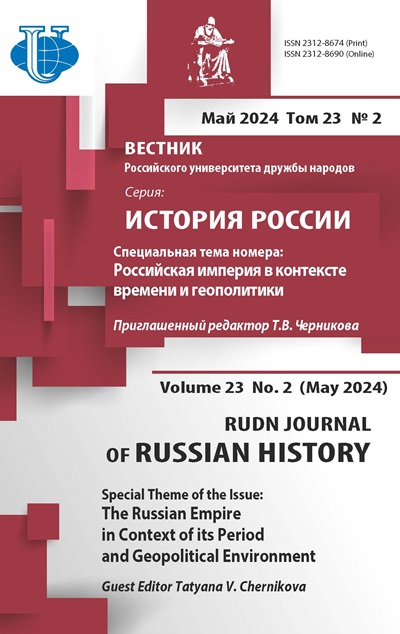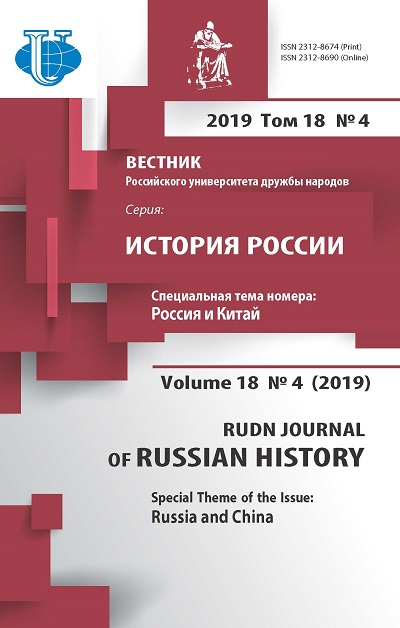Russian-Chinese cooperation in Central Asia in the context of ‘Belt and Road Initiative:’ Historical retrospective and economic prospects
- Authors: Martynenko S.E.1, Parkhitko N.P.1
-
Affiliations:
- RUDN University
- Issue: Vol 18, No 4 (2019): RUSSIA AND CHINA
- Pages: 845-864
- Section: RUSSIA AND CHINA
- URL: https://journals.rudn.ru/russian-history/article/view/22310
- DOI: https://doi.org/10.22363/2312-8674-2019-18-4-845-864
Cite item
Full text / tables, figures
Abstract
This article examines Russo-Chinese investment cooperation in China’s Belt and Road Initiative (originally the Silk Road Economic Belt). At the same time, it also studies bilateral agreements, as well as investment and mechanisms. Another focus is the impact of the BRI in Central Asian countries on Russian interests in the region. Research is based on an analysis of the history of joint Russian and Chinese initiatives for economic development to determine the feasibility of cooperation in the BRI. Meanwhile, the authors discuss the BRI’s impact on the economic and foreign policy of the two partners, as well as the risks and opportunities for Russia. The article is based on content and statistical analysis combined with a historical approach. It concludes that Russia and China are actively developing investment cooperation in the framework of the BRI, including the Silk Road Fund. The principal elements of the partnership involve the economy and processing and transporting energy resources. Its objective is to attain both regional economic stability as well as maximizing economic and political independence.
Keywords
About the authors
Stanislav E. Martynenko
RUDN University
Author for correspondence.
Email: martynenko-se@rudn.ru
Kandidat istoricheskikh nauk [Ph.D. in History], Assistant at the Department of Theory and History of International Relations, RUDN University.
6, Miklukho-Maklaya St., Moscow, 117198, RussiaNickolay P. Parkhitko
RUDN University
Email: parkhitko-np@rudn.ru
Kandidat istoricheskikh nauk [Ph.D. in History], Associate Professor at the Department of Theory and History of Journalism, RUDN University.
6, Miklukho-Maklaya St., Moscow, 117198, RussiaReferences
- Kolosov, V.A., Zotova, M.V., Popov, F.A., Gritsenko, A.A., and Sebentsov, A.B. “Postsovetskoye pogranich’ye Rossii mezhdu Vostokom i Zapadom (analiz politicheskogo diskursa).” Polis. Political Studies Journal, no. 5 (2018): 57-69 (in Russian)
- Li, Na. “Initsiativa ‘odin poyas, odin put’’ kak novaya model’ sotrudnichestva KNR s Rossiyey i stranami Tsentral’noy Azii.” RUDN Journal of World History 10, no. 4 (2018): 382-392 (in Russian).
- Luzyanin, S.G. “ ‘Odin poyas, odin put’:’ rossiyskaya proyektsiya i problemy sopryazheniya.” In Kitay v mirovoy i regional’noy politike. Istoriya i sovremennost’, 27-37. Moscow: IDV RAN Publ., 2017 (in Russian).
- Luzyanin, S.G., and Larin, A.G. “Problema kitayskikh migrantov v Rossii v kontekste sopryazheniya “YEAES - Shelkovyy put’.” In Kitay v mirovoy i regional’noy politike. Istoriya i sovremennost’, 64-76. Moscow: IDV RAN Publ., 2017 (in Russian).
- Makarov, I.A., and Sokolova, A.K. “Sopryazheniye yevraziyskoy integratsii i Ekonomicheskogo poyasa Shelkovogo puti: vozmozhnosti dlya Rossii.” International Organizations Research Journal 11, no. 2 (2016): 40-57 (in Russian).
- Mastepanov, A., and Tomberg, I. “Kitay diktuyet energeticheskuyu politiku XXI v.” International Trends 16, no. 3 (2018): 6-38 (in Russian).
- Mosyakov, D.V. “Novaya i noveyshaya istoriya. Modernizatsiya i globalizatsiya vostochnykh obshchestv.” International Trends 15, no. 3 (2016): 103-106 (in Russian).
- Mitchell, G. “China in Central Asia: The beginning of the end for Russia?” Slovo 26, no. 1 (2014): 18-31.
- James, Sherr. “How to Suborn Great Powers.” Asia Policy, no. 16 (2013): 164-167.
- Tertri, D. “Russkiy vopros v postsovetskiy period.” Vestnik of Saint Petersburg University. History 62, no. 1 (2017): 43-56 (in Russian).
















